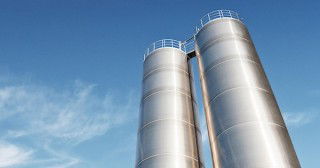As one of the most popular building materials in the world, cement has countless uses, including as the glue that holds concrete together and the precast for pipe manufacturing. Given this ubiquity, cement manufacturing is critical to society. However, cement production, and the concrete sector more broadly, is reported to be among the highest for carbon emissions per revenue dollar. In the US, cement manufacturers that change how they use energy stand to reap major financial and environmental benefits because of a new federal law. By Convergent Energy and Power, USA.
The cement industry accounts for about 15 per cent of all industrial energy use, creating a significant opportunity to decarbonise. The large amount of power required for cement production drastically exposes the concrete sector to fluctuations in energy prices.
In addition to the burning of fossil fuels to reach the extreme temperatures necessary to produce cement, cement manufacturers use a lot of energy with plant-level electrical loads ranging between 20-40MW at each plant. That is roughly equal the amount of power used by 15,000-30,000 individual homes.
